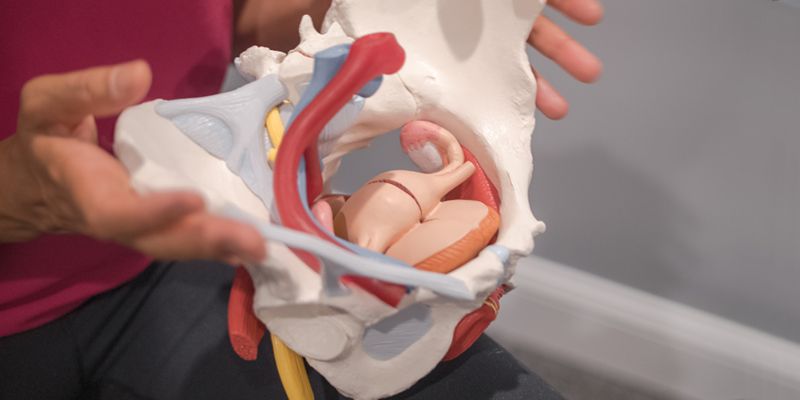
Trigger points are nagging little knots in our muscles that cause pain and tenderness, typically due to stress on or overuse of the muscle. The pain doesn’t just end in these knots; each trigger point has a referral pattern that causes pain to radiate to other areas of the body. (For more about trigger points, see https://invincible-pun.flywheelstaging.com/physical-therapy/Trigger-Points-are-not-for-Target-Practice/subpage12.html) Trigger points are commonly found in the gluteus medius, a triangular or fan shaped muscle located on the side of the hip, beneath the gluteus maximus. The gluteus medius is one of the muscles that supports the hip and is crucial in rotating the thighs. It also enables us to perform hip abductions, or movements that pull the thighs out to each side. Trigger points here cause pain that is more common than we realize, and because of trigger point referral patterns, this pain may pop up in some unexpected places!
The gluteus medius is important because it functions alongside other muscle groups like the gluteus maximus, the gluteus minimus and the lumbar paraspinal muscles to enable the smooth and painless movement of our lower backs, hips and legs. It helps to keep our pelvis level while standing upright or walking. The gluteus medius may harbor many latent trigger points, meaning that they do not cause blatant pain or irritation until they are touched. So, those who are struggling with chronic lower back, hip or pelvic pain may actually be experiencing the effects of “hidden” trigger points of the gluteus medius. Trigger points in this muscle also often cause pain in the thighs, knees and hamstrings. Many people struggling with pain throughout the legs and in the lower buttocks may be surprised that the problem is very likely stemming from the gluteus medius because of its location high on the outer hip. Oftentimes, this pain is misdiagnosed as more serious conditions like bursitis, in which the fluid filled sacs called bursae surrounding our joints become irritated and inflamed, or sciatica, in which the sciatic nerve that runs from each buttock to leg is compressed.
Have you been given a similar diagnosis for such pain? A physical therapist at Rebalance can help you to reassess your symptoms to discover if trigger points of the gluteus medius are the true source of the problem. Your therapist will take a personal approach to your treatment, beginning with screening your gluteal muscles for pain and weakness. They will help you to determine which lifestyle factors may be contributing to your pain, such as sleeping in a fetal position and sitting for prolonged periods of time, and suggest alternatives. To relieve pain, they will prescribe hip strengthening exercises that are appropriate for you and use methods like trigger point release, in which the affected muscles are stretched in a variety of muscle energy techniques. This helps to resolve muscular strain patterns so that these trigger points cannot reform.
Do you have any of these symptoms and wonder if trigger points may be targeting you? Contact Rebalance physical therapists to nip gluteus medius pain in the bud!
In-Person and Online Consultations


